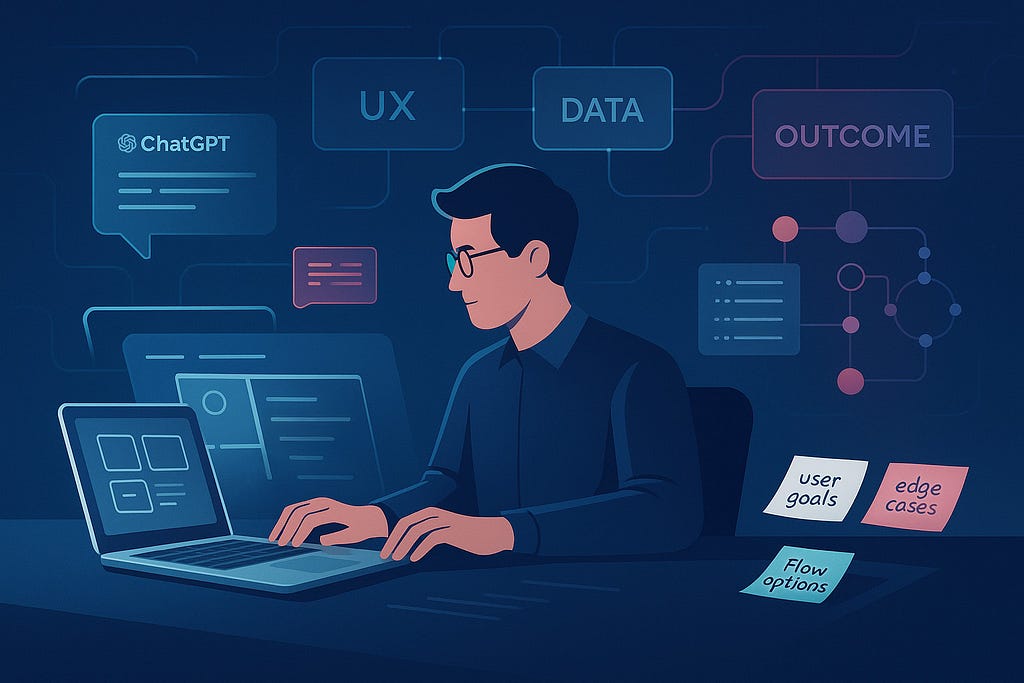
How design is becoming the engine — not just the interface — of modern products.
A few weekends ago, I launched a Shopify app on my own — not to prove I could code, but to solve a real merchant pain point. I had no dev team, no startup budget — just a clear understanding of the problem, a few AI tools, and the instincts of a designer.
But what surprised me most wasn’t the launch. It was the shift in perspective.
For the first time, I wasn’t designing something to be built.
I was designing something by building it.
Why This Moment Feels Different
Designers have always been problem-solvers. But until recently, we were often boxed into solving parts of problems — the visuals, the flow, the usability.
Now, with tools like ChatGPT and Cursor, we can remove the technical barrier between thought and output. That changes everything.
Suddenly, our value isn’t just in how things look, but in how they work. We’re no longer asking, “How do I make this screen intuitive?” We’re asking, “What’s the best experience, and how can I deliver it myself?”
The Designer-as-Builder Shift
There’s something powerful about skipping the handoff — not just for speed, but for clarity. When you’re responsible for implementation, you make better decisions earlier. You think more in systems, edge cases, and flows — not just pixels.
Tools like Cursor and AI models aren’t shortcuts — they’re extensions of intent. They let you stay in the driver’s seat longer, shaping both the “what” and the “how.”
It’s Not “Full Stack.” It’s Full Context.
This isn’t about turning every designer into an engineer.
It’s about enabling more complete creative expression — across more layers.
Some of us will still go deep into motion, interaction, and craft.
Others will grow into flows, data, and service logic.
What connects us is the mindset:
Problem-first. Outcome-driven. User-centred.
A New Kind of Team
In the future, teams may not be defined by titles, but by perspectives.
You might have a designer writing backend logic.
A PM prototyping flows directly in production.
Or a solo designer launching apps in a weekend — not because it’s their job, but because they understand the problem deeply enough to build the solution.
This isn’t about doing it all.
It’s about doing more of what matters — faster and more fluidly than before.
Why This Matters Now
The AI tooling shift isn’t just about speed. It’s about agency.
And it reveals something deeper about how product teams are evolving.
As AI removes technical bottlenecks, designers aren’t just stepping into builder roles — they’re stepping into product leadership.
In many companies, designers are absorbing responsibilities once held by PMs — not out of ambition, but because they’re closest to the user, the flow, and the friction. Because the work needs doing — and they’re the ones who can do it.
The truth is: many designers can do what PMs do — and more. But the reverse isn’t always true.
Some teams will use AI to replace design with automation.
But others will use it to empower the people who know how to define the right problems in the first place.
The difference?
One ships features.
The other delivers meaningful change.
The Path Forward
This shift doesn’t mean designers need to pick up yet another skill or take over someone else’s job. It means recognizing that design thinking itself — understanding problems, shaping systems, and focusing on people — is capable of going further.
Designers don’t just push pixels. We craft intent.
We don’t just deliver UI — we deliver clarity, empathy, and usable solutions that can flex across tools, technologies, and teams.
And as companies begin to rely more on AI-generated output, one thing becomes clear: building and scaling a strong design system will become more critical than ever.
Design systems are what help AI tools stay consistent, accessible, and on-brand. They’re the connective tissue between vision and execution. And until visual interfaces slowly phase out — if they ever do — they’ll be the backbone of how we scale quality.
The future of product isn’t built around job titles.
It’s built around people who understand problems — and now have the tools to solve them, end to end.
And more often than not?
That person will be a designer.
Designers Beyond the Interface: Building, Leading, and Solving in the Age of AI was originally published in UX Planet on Medium, where people are continuing the conversation by highlighting and responding to this story.